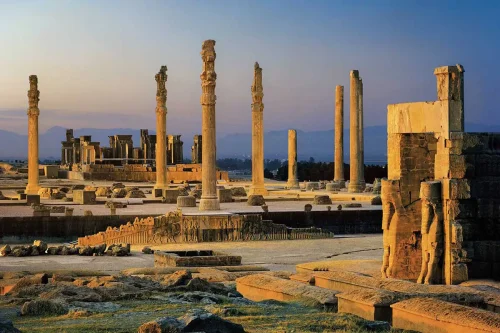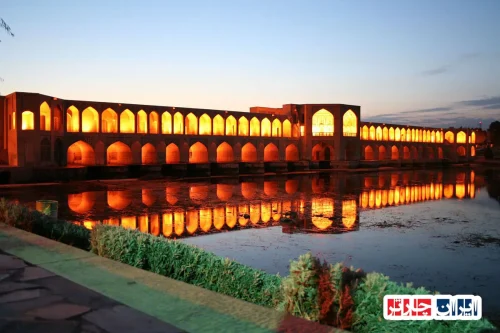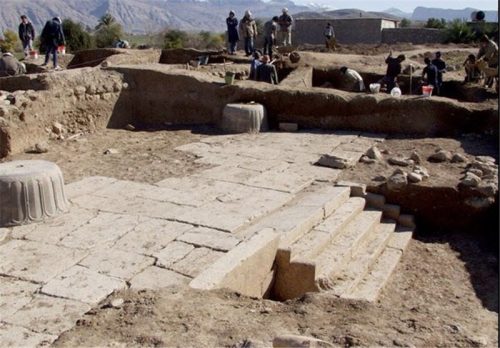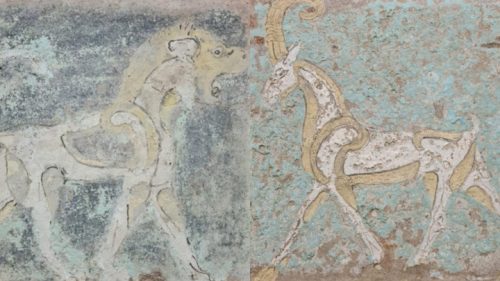News Source : https://www.irna.ir/news/85672504/%DA%A9%D8%B4%D9%81-%D9%82%D8%AF%DB%8C%D9%85%DB%8C-%D8%AA%D8%B1%DB%8C%D9%86-%D8%A7%D9%84%D9%81%D8%A8%D8%A7-%D8%AF%D8%B1-%D9%85%D9%82%D8%A8%D8%B1%D9%87-%D8%A7%DB%8C-%D8%AF%D8%B1-%D8%B3%D9%88%D8%B1%DB%8C%D9%87
Discovery of the Oldest Alphabet in a Tomb in Syria
Tehran – IRNA – Archaeologists have identified traces of the discovery of the oldest alphabet in a tomb in Syria on four clay cylinders found in one of the ten tombs at the ancient site of Umm al-Marra in Aleppo, Syria. According to the IRNA scientific group from the Nature website, these clay cylinders date back to 4,400 years ago. The tomb, which was discovered in 2004, contained human remains and other artifacts from the early Bronze Age (2150-2600 BC). Each of these clay cylinders is the size of a finger and engraved with eight distinct symbols. The discovery of the oldest alphabet in a tomb in Syria might rekindle the debate about where the oldest alphabet was discovered. These alphabet letters do not match any known languages. However, Schwartz attempted to decipher these letters by comparing them with characters of Western Semitic languages, including ancient and modern Hebrew, Aramaic, and Arabic, and presented his findings at the annual meeting of the American Schools of Oriental Research in Boston, USA. Besides these cylinders, archaeologists discovered gold jewelry, silver vessels, an ivory comb, and pottery. The findings from these tombs indicate they belonged to individuals of the highest social class.
Introduction to the Discovery of the Oldest Alphabet in a Tomb in Syria
The discovery of the oldest alphabet in a tomb in Syria is one of the most significant archaeological achievements in recent years. This ancient find consists of four clay cylinders discovered in one of the ten tombs at the Um el-Marra archaeological site in Aleppo province, Syria. These cylinders, dating back over 4,400 years, contain eight distinct engraved signs representing an early alphabetic writing system. These findings not only illuminate the history of writing in the region but also pave the way for further study of cultural and linguistic exchanges among ancient civilizations of the area.
The Importance of Discovering the Oldest Alphabet in a Tomb in Syria for Linguistic History
The discovery of the oldest alphabet in a tomb in Syria is of great importance to the field of linguistics. These findings could aid in the study of the evolution of the West Semitic languages and their impact on modern languages. Despite the fact that the discovered alphabet does not match any known languages, preliminary analysis suggests they might be precursors to the development of Hebrew and Aramaic languages. This discovery can potentially lead to a reevaluation of existing theories surrounding the origin and development of alphabets and play a crucial role in understanding linguistic connections in ancient civilizations of the area.
The Process of Uncovering the Alphabet in a Syrian Tomb by Archaeological Teams
The process of uncovering the alphabet in a Syrian tomb by international archaeological teams was well-planned. The scientific team from IRNA, along with renowned archaeologists from Johns Hopkins University and other research institutions, conducted extensive excavations at the ancient site of Um el-Marra. The discovery of the four clay cylinders with enigmatic engravings was a highlight of these efforts. Utilizing advanced technology in material analysis and deciphering four engraved signs on the cylinders enabled a more precise examination and potential decoding of this writing system.
Analysis of the Engraved Symbols on the Ancient Cylinders in Syria
The engraved symbols on the ancient cylinders in Syria indicate an early alphabetic writing system. Each cylinder is finger-sized and contains eight distinct symbols that are likely representative of early letters of a written language. Initial analyses by Glenn Schwartz suggest these symbols may represent early sounds of the West Semitic languages. However, a full correspondence of these letters with known languages has yet to be achieved, necessitating further investigation for more accurate deciphering.
The Impact of Discovering the Oldest Alphabet in a Tomb in Syria on Archaeological Studies
The discovery of the oldest alphabet in a tomb in Syria has far-reaching implications for archaeological studies. This discovery not only helps explain the power and wealth of the highest social class during the Early Bronze Age but can also lead to a better understanding of the social and cultural structures of that time. Furthermore, these findings could play a significant role in revealing trade and cultural links between various civilization centers in the region, prompting a reevaluation of existing theories about cultural and economic exchanges among ancient civilizations.
Comparison of the Discovered Alphabet in Syria with Western Semitic Languages
The discovered alphabet in Syria has been compared with Western Semitic languages. Despite the fact that these letters do not precisely match known languages like Hebrew, Aramaic, and Arabic, some researchers believe this alphabet may have been a precursor to the development of these languages. Initial comparisons indicate some symbols of this alphabet correlate with particular letters of Western Semitic languages, but further and more detailed analyses are required to fully understand the relationship between this writing system and modern languages.
Cultural Significance of Discovering the Oldest Alphabet in a Tomb in Syria
The discovery of the oldest alphabet in a tomb in Syria is not only scientifically significant but also culturally noteworthy. These findings illustrate mankind’s cultural and scientific advancements in ancient times and represent early efforts to record history and transmit knowledge across generations. Additionally, this discovery can enhance the region’s cultural and historical identity and play an important role in preserving ancient cultural heritage.
Future Potentials in Fossil and Inscription Research in Syria
The discovery of the oldest alphabet in a tomb in Syria has opened new doors for fossil and inscription research in the region. Given recent successes, archaeological teams are expected to uncover more findings in the near future, which will enable a greater understanding of the history and ancient civilizations of Syria. The use of new technologies such as 3D scanning and digital analysis could significantly help accelerate research processes and more accurately decode this writing system.
The Importance of International Cooperation in Discovering Ancient Alphabets
The discovery of the oldest alphabet in a tomb in Syria exemplifies the importance of international cooperation in the field of archaeology. Research teams from different countries managed to achieve this significant discovery by sharing their knowledge and expertise. Such collaborations not only advance scientific progress but also foster cultural and scientific relations among nations. Moreover, these collaborations can provide a suitable model for future research projects in various archaeological fields.
Frequently Asked Questions
- Where was the oldest alphabet discovered?
- The oldest alphabet was discovered in a tomb at the ancient site of Um el-Marra in Aleppo province, Syria.
- What is the estimated age of the identified clay cylinders?
- The identified clay cylinders are estimated to date back 4,400 years.
- When was this tomb discovered?
- This tomb was discovered in 2004.
- What were the contents of the tomb?
- The tomb contained human remains and other items related to the Early Bronze Age.
- What are the dimensions of the discovered clay cylinders?
- Each of the discovered clay cylinders is about the size of a finger.
- How many symbols are engraved on the clay cylinders?
- Each clay cylinder has eight distinct engraved symbols.
- Who is Chris Dabes Alsop and where is he conducting research?
- Chris Dabes Alsop is a scholar of antiquity and Semitic languages at Princeton’s School of Religious Studies in New Jersey, USA.
- What role did Glenn Schwartz play in this exploration?
- Glenn Schwartz, an archaeologist from Johns Hopkins University in the USA, led the exploration and studied the inscriptions.
- Which letters were identified in the discovered writings?
- The discovered symbols correspond to sounds matching the letters a, i, k, l, n, s, and y.
- With which known languages do these alphabets not correspond?
- These alphabet letters do not correspond to any known languages.
- What languages did Schwartz use to decipher the letters?
- Schwartz compared the letters with scripts from Western Semitic languages, including ancient and modern forms of Hebrew, Aramaic, and Arabic.
- Besides clay cylinders, what other items were found in the tomb?
- In addition to clay cylinders, gold jewelry, silver vessels, an ivory comb, and other pottery items were discovered.
- What do these items indicate about the social status of the tomb’s occupants?
- These items suggest that the individuals in the tombs belonged to the highest social class.
- Where was the oldest alphabetical script found before this discovery?
- Before this discovery, the oldest alphabetical script was found in Egypt.
- Why is hieroglyphics not considered an alphabet?
- Hieroglyphics are not considered an alphabet because they typically use pictures to represent whole words rather than a set of letters each corresponding to a sound.
- What impact might this discovery have on the debate over the oldest alphabet?
- This discovery might reignite the debate over the origin of the oldest alphabet.
- To which historical period do the discovered cylinders belong?
- The discovered cylinders belong to the Early Bronze Age (2150-2600 BC).
- With which scripts were the discovered writings compared?
- The discovered writings were compared with scripts from Western Semitic languages like Hebrew, Aramaic, and Arabic.
- How many tombs have been discovered at the Um el-Marra archaeological site?
- At the Um el-Marra archaeological site, 10 tombs have been discovered.









